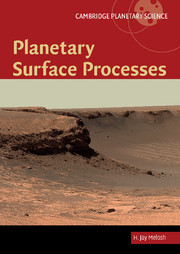3 - Strength versus gravity
Published online by Cambridge University Press: 05 June 2012
Summary
The existence of any differences of height on the Earth’s surface is decisive evidence that the internal stress is not hydrostatic. If the Earth was liquid any elevation would spread out horizontally until it disappeared. The only departure of the surface from a spherical form would be the ellipticity; the outer surface would become a level surface, the ocean would cover it to a uniform depth, and that would be the end of us. The fact that we are here implies that the stress departs appreciably from being hydrostatic; …
H. Jeffreys, Earthquakes and Mountains (1935)Topography and stress
Sir Harold Jeffreys (1891–1989), one of the leading geophysicists of the early twentieth century, was fascinated (one might almost say obsessed) with the strength necessary to support the observed topographic relief on the Earth and Moon. Through several books and numerous papers he made quantitative estimates of the strength of the Earth’s interior and compared the results of those estimates to the strength of common rocks.
Jeffreys was not the only earth scientist who grasped the fundamental importance of rock strength. Almost fifty years before Jeffreys, American geologist G. K. Gilbert (1843–1918) wrote in a similar vein:
If the Earth possessed no rigidity, its materials would arrange themselves in accordance with the laws of hydrostatic equilibrium. The matter specifically heaviest would assume the lowest position, and there would be a graduation upward to the matter specifically lightest, which would constitute the entire surface. The surface would be regularly ellipsoidal, and would be completely covered by the ocean. Elevations and depressions, mountains and valleys, continents and ocean basins, are rendered possible by the property of rigidity.
G. K. Gilbert, Lake Bonneville (1890)- Type
- Chapter
- Information
- Planetary Surface Processes , pp. 49 - 103Publisher: Cambridge University PressPrint publication year: 2011
- 2
- Cited by

